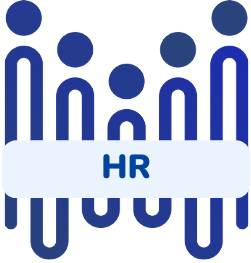
From Inductions to Long-Term Integration

Onboarding for Employees: From Inductions to Long-Term Integration
Onboarding is a crucial process that instils a sense of value and motivation in new employees as they begin their roles. This process greatly affects job satisfaction and improves employee retention rates. According to the Brandon Hall Group, implementing a robust onboarding program can lead to an 82% increase in hire retention and a 70% boost in productivity. Unlike a one-time orientation, onboarding is an ongoing process that starts from recruitment and can extend throughout the employee's first year. It helps integrate new hires into the workplace, familiarise them with the company culture, and provide them with the necessary training and resources for success.
Importance of Comprehensive Onboarding
Neglecting onboarding can be detrimental to a business, as inadequately inducted employees often lack direction, which can lead to decreased productivity and more frequent mistakes. Companies that invest in thorough onboarding programs show their commitment to their employees' development. Effective onboarding facilitates quick engagement and integration, ensuring new hires understand business processes, organisational structures, culture, and core values. It also sets clear expectations regarding performance, behaviour, and attitude from the outset, providing comprehensive job training and mentorship that build competency and confidence. Furthermore, a well-executed onboarding process improves retention rates, thereby reducing hiring costs and contributing to the formation of a strong and stable team.
Practical Tips for Successful Onboarding
Pre-boarding: Initiate activities to create a welcoming environment before the new hire's official start date. This can include scheduling informal social interactions to help them connect with colleagues.
Announcement: Communicate to the team about the new hire, including details about their role and the value they bring to the company.
Induction Plan: Develop a detailed induction plan that outlines the essential activities for the new employee's first month.
Background Information: Provide an introduction to the company’s mission, vision, culture, and key stakeholders, as well as insights into the workplace culture and business strategy.
Benefits Information: Clearly communicate essential details about compensation, rewards, company pensions, and any other benefits, along with relevant policies and eligibility criteria.
Policies and Procedures: Explain company policies and procedures, including those related to flexible working arrangements and health and safety guidelines. Provide the company handbook for reference.
Roles and Expectations: Align new team members' personal goals with the company’s objectives and clarify expectations for their performance and behaviour.
Attention to Details: Offer practical information, such as phone dialling procedures, lunch breaks, and facility locations, to ease the transition and reduce stress for new employees.
Prepared Workspace: Ensure that the new hire's workspace is ready, complete with necessary equipment and instructions for use, to alleviate first-day nerves.
Training Plan: Engage new employees in meaningful work as soon as possible, with appropriate supervision, and identify development areas through shadowing and gradual integration.
Progress Tracking: Regularly conduct informal reviews and one-on-one meetings to monitor the new hire's development and address any training needs. Encourage them to ask questions and share concerns.
Fun Element: Emphasise opportunities for social interaction and highlight the enjoyable aspects of the workplace to make new employees feel welcome and valued.
Overall, onboarding is a fundamental part of introducing employees to a company, enhancing job satisfaction, and fulfilling the promises made during recruitment. A consistent onboarding experience ensures each new hire has a positive induction. Collecting feedback from employees helps refine the process, focusing on crucial elements like team introductions, benefits information, and a structured induction plan.





